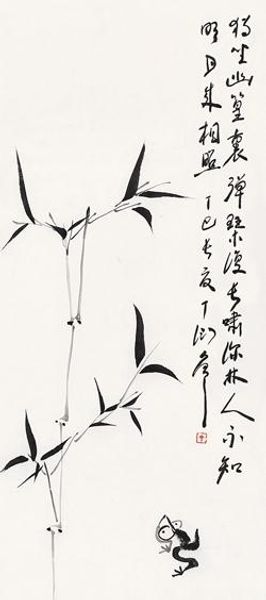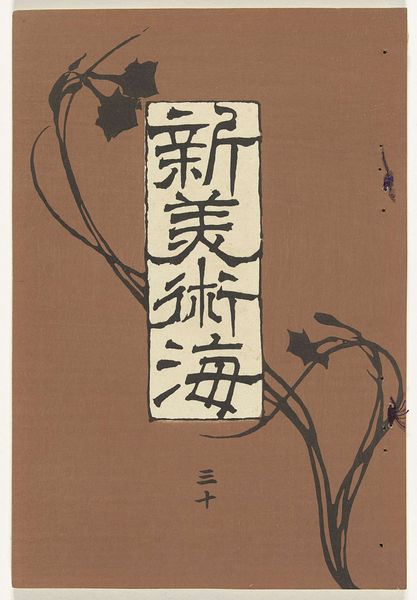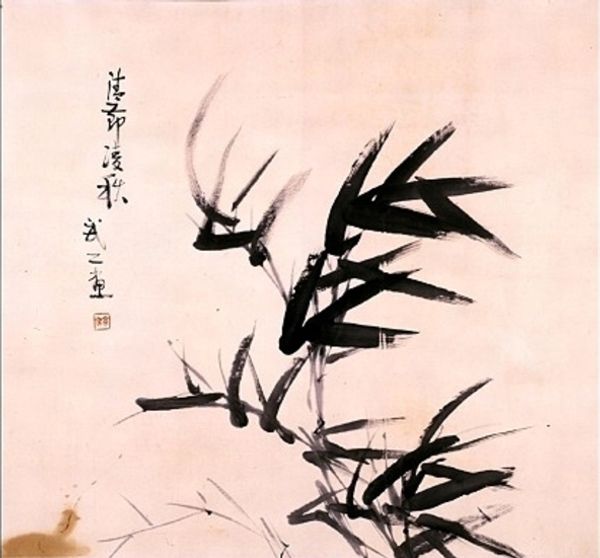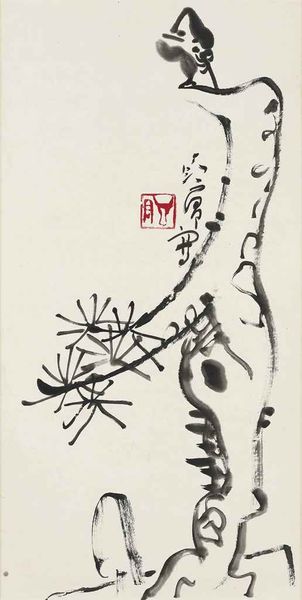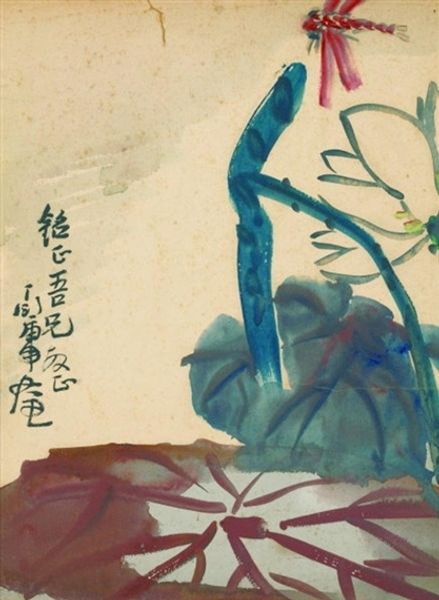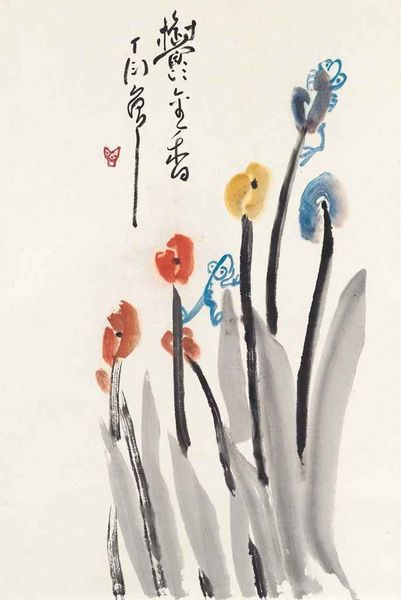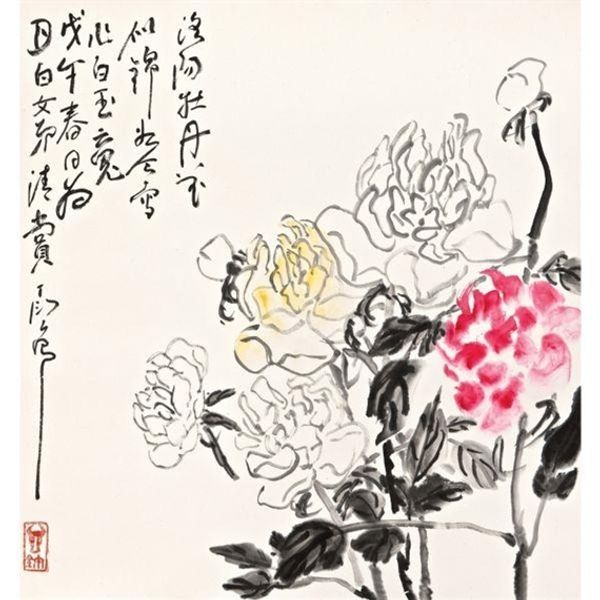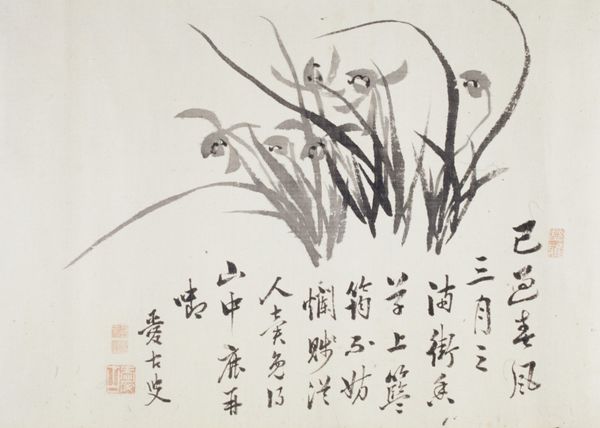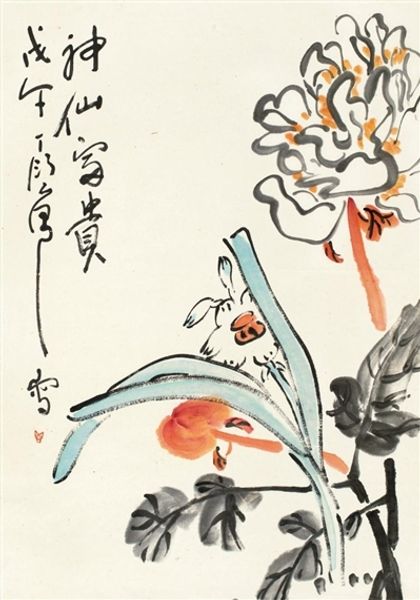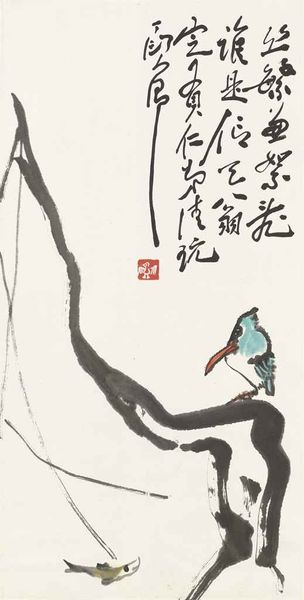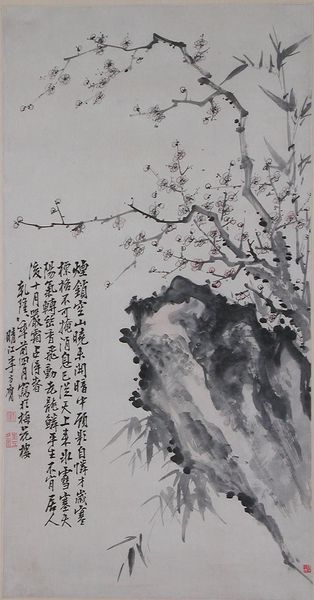
drawing, paper, ink
#
drawing
#
pen illustration
#
asian-art
#
flower
#
paper
#
ink line art
#
ink
#
plant
#
botany
#
calligraphy
Copyright: Ding Yanyong,Fair Use
Curator: This is "Bees and Narcissus" by Ding Yanyong, created with ink on paper. I’m immediately struck by its delicacy. Editor: Yes, it feels quite ephemeral, doesn’t it? Almost weightless. The spare composition, the contrast between the solid ink of the leaves and the calligraphic text – there's a real sense of lightness. Curator: Absolutely. Thinking about Ding Yanyong’s process, the way he uses the brush to create such varied textures with just ink and paper…it’s really about mastery of material. Consider how much control and practice goes into creating this seeming spontaneity. Editor: And beyond the materials, there’s that loaded symbolism. The narcissus itself is tied to concepts of vanity and self-love, while the bees suggest industry and… community. How do these elements interact in the context of mid-20th-century China, a time of intense collectivization? Is the individual lost or perhaps transformed into service? Curator: That's a powerful lens. I'm particularly drawn to the contrast in how the leaves are rendered with broad, wet strokes, versus the bees which are meticulously detailed. To me, it showcases a tension between expressive gesture and careful representation of form. Editor: Indeed. I read the positioning of the text, almost overshadowing the image, as the dominance of narrative. A pre-determined story overwhelms a perhaps quieter, individual reflection in the flowers. The bees’ role, too, then may only be for the service of the grand, almost overbearing, historical and social construct in the calligraphy. Curator: Or, one might say the interplay of calligraphy and image shows a fusion of visual and textual languages; challenging traditional modes of seeing by presenting them together in equal footing as expressive media. Editor: A compelling counter-argument, I must admit. Considering those visual and textural qualities offers up new perspectives and complexities, reflecting broader cultural conversations of the time. Curator: Right. It’s through understanding the work, labor, and social context inherent in his material usage that we can reframe conventional assumptions and understand a deeper truth. Editor: "Bees and Narcissus", viewed through a focus on history, production, and symbolism, certainly urges us to unpack preconceived ideas and examine how identity can be shaped by both material and sociopolitical influences.
Comments
No comments
Be the first to comment and join the conversation on the ultimate creative platform.
